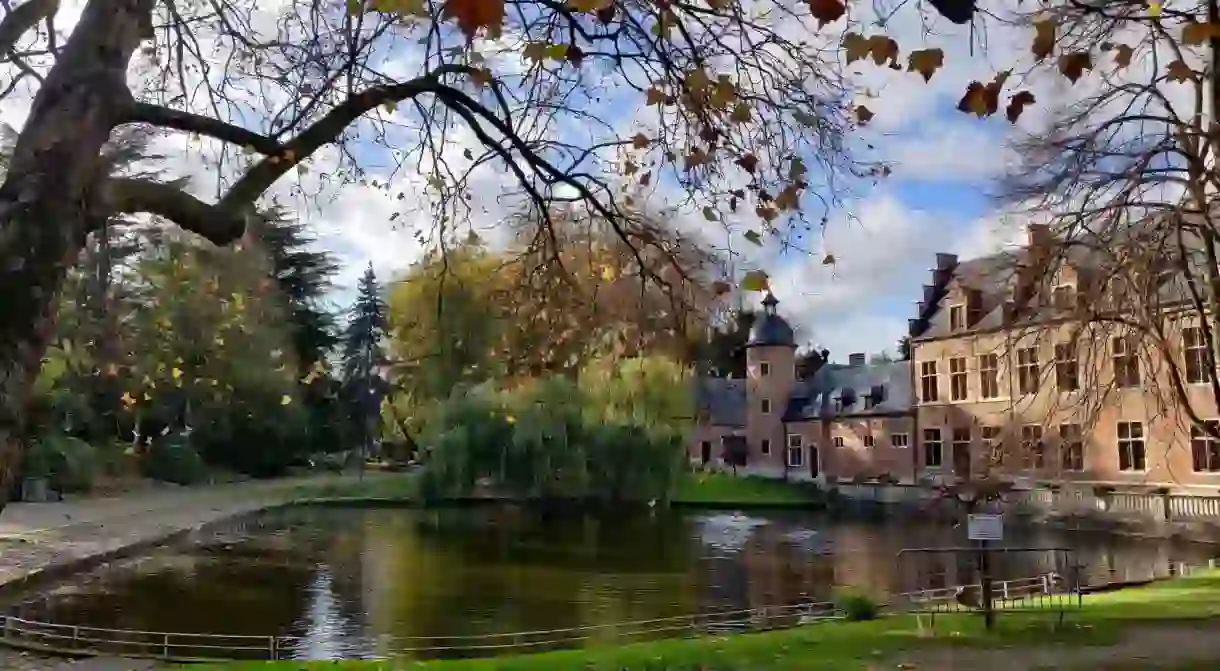Reasons You Should Never Visit Molenbeek-Saint-Jean

Molenbeek-Saint-Jean is not just a terrible neighborhood; it is the root of all evil. It is basically the Mordor of Europe’s Middle-Earth. This is why you should never, ever go there; in fact, most people who go to Molenbeek either disappear or become insane because they can’t handle the pleasantly leafy streets, the beautiful art-nouveau architecture, or the buzzing multicultural vibe. Don’t say we didn’t warn you.
Did you know – Culture Trip now does bookable, small-group trips? Pick from authentic, immersive Epic Trips, compact and action-packed Mini Trips and sparkling, expansive Sailing Trips.
La Fonderie
The Brussels Museum of Industry and Labor is located in an old factory and offers many permanent and temporary exhibitions about the city’s rich industrial past. This is one of the many institutions based in Molenbeek that attempts to teach its visitors about new things; this is, in our opinion, a fate worse than death.
Opening Hours: Tue-Fri 10am-5pm & Sat-Sun 2-5pm
Karreveld Castle
Karreveld Castle was recently completely renovated, turning it into somewhat less of a dump than it used to be. The adjacent park is also a nightmare, as it is populated with renegade swans and treacherous paths. Worst of all are the people enjoying themselves, especially during the Molenbeek Christmas market organized inside the castle.
Scheutbos
Another terrifying part of Molenbeek is the Scheutbos, a large stretch of stunning nature that should be avoided at all costs. Spanning over six hectares, this isn’t just a park, it’s overkill. Nobody needs this much green space in a city, and certainly not the ecological diversity that accompanies it.
Tour & Taxis
The sprawling Tour & Taxis buildings host numerous events, from concerts to art fairs, and are essentially one of Brussels’ cultural hubs. How about taking a look at the upcoming BRAFA, the Brussels Art Fair? Or check out the on-site archeological discoveries dating back to the Roman Age? However, we would like to emphasize that culture is bad for you and so is fun, so this is just one more reason to stay away from Molenbeek.
Dinner and a show at Café de la Rue
Café de la Rue is over thirty years old, and has a unique dinner and a show combo involving acts from comedians to musicians, which hostess Marie-Noëlle presides over with warmth and skill. The interior also retains its old-time charm, with scrubbed wooden tables and an iron stove. You’d be better off staying at home, really.
Saint John the Baptist Church
Anyone with an inkling of aesthetic appreciation should stay far away from the Art Deco Saint John the Baptist Church in Molenbeek. Designed by the insignificant architect Joseph Diongre, the interior of the church feels like being in a giant whale’s belly and that definitely isn’t anyone’s idea of a good time.
Opening Hours: Sat 10am-6pm & Sun 1-6pm
Brasserie de la Senne
One of three breweries actually located in Brussels, the Brasserie de la Senne is a breath of fresh air in the Brussels beer scene. Guided tours are available for groups of over 15, but everyone knows Belgian beer is terrible anyway, so it probably isn’t worth a visit.
Opening Hours: Mon-Fri 9am-3pm
Visiting the Sunday Market
This bustling Sunday market sells all sorts of delicious ethnic food, but unfortunately you won’t find any tourists here. We advise you to stick to the Rue des Bouchers instead. In fact, you should probably never try new food, ever. Instead, it would be safer to eat the same thing all day every day, over and over again, because boredom is infinitely preferable to the horrors of the unknown.
Opening Hours: Tue 8am-1pm, Thu 8am-1pm & Sun 8am-1pm
MoMuse
MoMuse tells the tale of the history of Molenbeek. Ever wondered where the neighborhood got its name? Or wondered what the customs and traditions of the Molenbekenaars were hundreds of years ago? Neither have we. And as we mentioned before, learning new things is of no benefit to anybody.
Cité Diongre
Back at the turn of the century, Englishman Ebenezer Howard developed the concept of the garden city, in which people could live harmoniously together with nature. In Molenbeek, a few examples of these garden cities can still be seen, with the most notable one designed by Joseph Diongre (the architect who also inflicted the Saint John the Baptist church in Molenbeek upon us). You’ll probably want to pass on this striking combination of urbanism and rural life.













